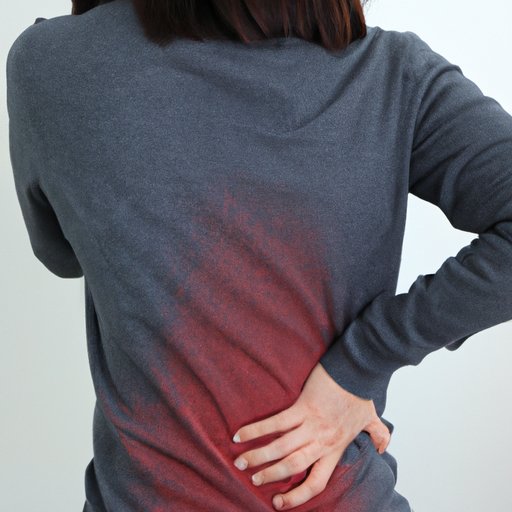
Introduction
Have you ever heard about Pott’s Disease? This rare condition affecting the spine can cause pain, weaken your bones, and lead to severe complications. In this comprehensive guide, we will explain what Pott’s Disease is, its symptoms, treatment, and prevention. Whether you are someone who has been diagnosed or a physician seeking to learn more about this condition, read on to get a better understanding of Pott’s Disease.
Understanding Pott’s Disease and Its Symptoms: A Comprehensive Guide
Pott’s Disease, also known as spinal tuberculosis, is a type of tuberculosis that affects the spine, leading to vertebral destruction and deformity. Pott’s Disease affects the thoracic and lumbar spine, with the thoracic region being the most commonly affected.
The disease is caused by bacteria called Mycobacterium tuberculosis, which often settles in the lungs and then spreads to the spine through the bloodstream. People with weak immune systems, particularly those with HIV/AIDS, are at higher risk of developing Pott’s Disease.
Some of the common symptoms of Pott’s Disease include back pain, weakness, limited mobility, and loss of bladder or bowel control. If you experience any of these symptoms, see a doctor for early diagnosis and treatment. Diagnosis of Pott’s Disease may include imaging tests such as X-rays, CT scans, MRI scans, and biopsy.
Treating Pott’s Disease: Innovative Approaches for a Rare Condition
Pott’s Disease is a rare condition, which can make treatment challenging. However, there are both medical and surgical treatments available to manage the symptoms and prevent further damage. Standard treatments include chemotherapy, antibiotics, and bed rest to alleviate pain.
In severe cases, surgical procedures such as laminectomy, spinal fusion, and bone grafts may be necessary. Modern approaches to treatment, such as non-surgical interventions with drugs, and other modern techniques depending on the state of the disease and patient management, have been gaining popularity in recent years due to their incredible success rate.
Challenges in treating Pott’s Disease include recognizing the disease, identifying the best therapy, treating prolonged drug regimens, toxicities associated with drug therapy, patient compliance, and follow-up assessments.
Innovations in treatment include better diagnostics, newer drugs, and interventions, and improved medical monitoring.
Complications and Side-Effects of Pott’s Disease Treatment: What You Need to Know
Like any other medical procedure, the treatment of Pott’s Disease may lead to some side-effects. For example, prolonged antibiotic use can cause liver injury, and surgical procedures can lead to instability in the spine. Patients who undergo surgical procedures may experience complications due to anesthesia. Appropriate monitoring and follow-up assessments are critical to managing the side-effects and complications associated with the treatment.
In addition, patients may experience other complications, like neurologic impairment, infection, and mechanical instability in their back that can present lifelong challenges. Patients need to adopt therapeutic and medical interventions to improve their quality of life and reduce the risk of future complications.
Pott’s Disease Demystified: What Every Physician Should Know
It is crucial for physicians to recognize and diagnose Pott’s Disease early to start prompt treatment. Diagnosis mainly depends on identifying clinical presentations suggestive of the disease and specific clinical tools such as chest x-rays and CT scans of the spine.
Patient management entails treatment with meticulous drug regimens and optimal supportive care. Additionally, collaboration with other specialists, such as infectious disease specialists, orthopedic spine surgeons, and rehabilitation clinicians, can support successful treatment outcomes.
Rehabilitation and Recovery after Pott’s Disease: A Step-by-Step Approach
Physical therapy and rehabilitation exercises are essential components of treating Pott’s Disease. Rehabilitation after Pott’s Disease treatment aims to improve mobility, decrease symptoms, and reduce vulnerability to falls, in addition to restoration of the patient’s activities of daily living. The rehabilitation also helps patients manage difficulties associated with medication regimen adherence, mobility, and pain control. Tips to speed up recovery include stretching exercises, strengthening the spine, stabilization, and spine mobilization exercises. It may also include specific corrective exercises targeting the erector spinae muscles responsible for body posture.
Understanding the Causes and Prevention of Pott’s Disease: Insights from Medical Professionals
Pott’s Disease is caused by Mycobacterium tuberculosis bacteria, which spreads from infected lungs to the spinal region. To prevent the disease, it is essential to reduce the occurrence of tuberculosis by early identification and prompt treatment of tuberculosis patients. Also, patients who have a weakened immune system should avoid or limit contact with anyone who has an active tuberculosis infection. Regular screening for tuberculosis can also help with early diagnosis and the appropriate management of the disease.
Conclusion
Understanding and diagnosing Pott’s Disease can be challenging, given the rarity of the disease. However, early diagnosis and prompt treatment can prevent severe complications. Physicians should collaborate with other medical professionals as needed, and patients should be vigilant and monitor their symptoms closely after treatment. The road to recovery may take time, but with proper interventions, patients can regain mobility, reduce pain, and lead a more vibrant lifestyle.
Together, we can increase awareness of Pott’s Disease, ramp up diagnostics, and lead the way to better treatment and management.




